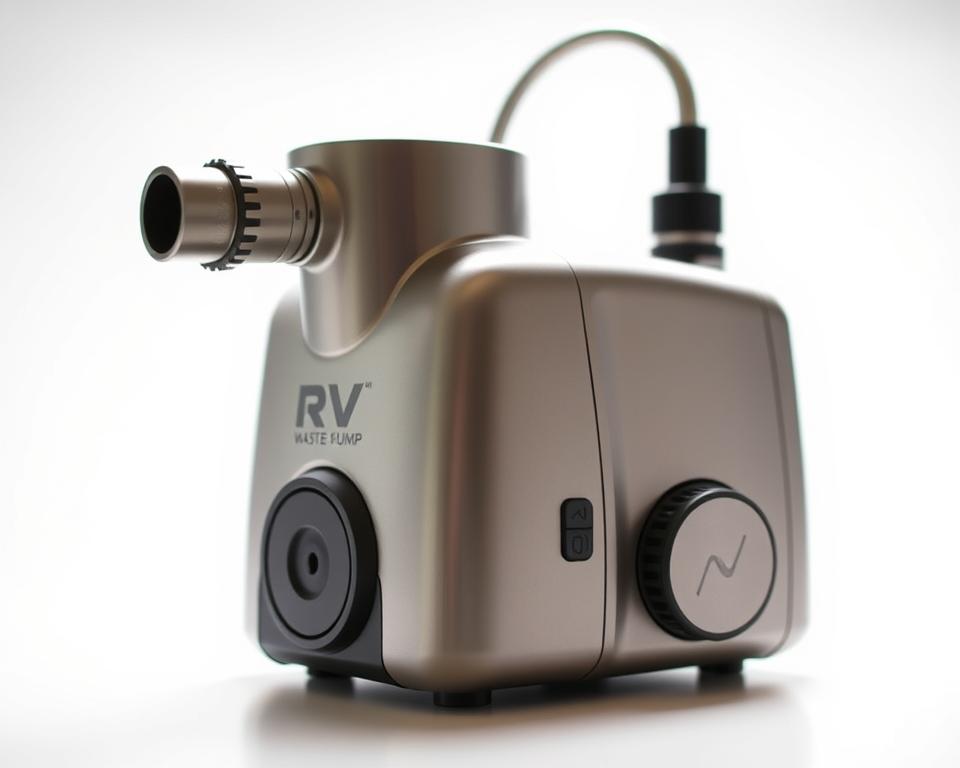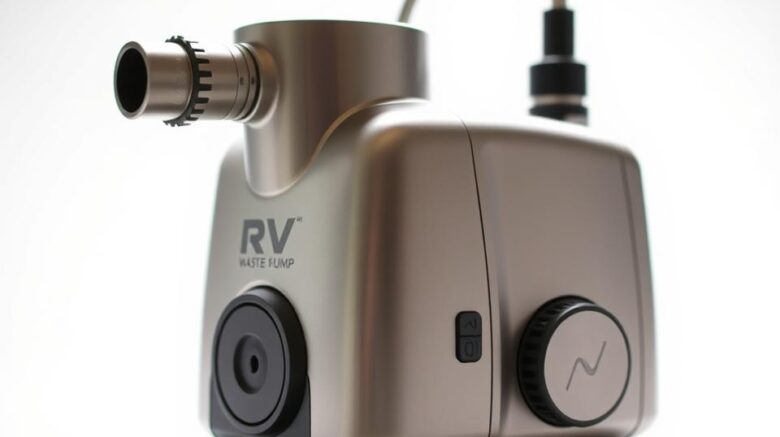RV Waste Pump Guide: Efficient Disposal Solutions
Have you ever considered how critical proper waste disposal is while on the road in your motorhome? A lot of travelers see dumping chores spoil their vibe. The search for a convenient dump site and the hassles of wastewater handling can impact your road trip. Yet, a reliable RV waste pump ensures smooth function for hassle-free dumping. This guide showcases the necessity of RV sewage pumps in transforming your waste management. It delivers hygiene, upgrading your RV journey.
Major Highlights
- Effective waste management is indispensable for RV owners.
- Reliable RV waste pumps can streamline dumping routines.
- On-the-go pump systems enhance convenience during RV adventures.
- Grasping wastewater tank care is important for RV sanitation.
- Optimized dumping methods upgrade overall outdoor journeys.
Getting to Know RV Waste Systems
Preserving cleanliness and comfort on the road needs organized waste disposal. A well-designed system includes a solid waste reservoir for human waste. It also includes other elements crucial for sanitation. Knowing how these components work is essential for safe and efficient waste disposal.
RVs produce unique waste from domestic sewage. This reality underscores the value of specialized waste management. Trippers need to learn on caring for their sewage reservoir. Such effort wards off odors and clogs, which can impede your trip.
Securing disposal points is essential, especially in off-grid locations. While many RV parks offer dumpsites, they might not always be available. Thus, knowing your options beforehand is important. This planning can considerably boost your camping experience.
Ultimately, managing RV waste effectively requires knowing your RV’s waste system and arranging for cleanliness. Being educated ensures a better adventure in your RV.
Understanding Waste Pumps
A camper sewage pump is crucial for removing waste from recreational vehicles. The camper grinder unit grinds solid waste into thin sludge. This permits easy pumping through a discharge hose to a disposal site. It’s especially helpful when gravity-fed systems fail.
Standard RV waste pumps and grinder units vary in functionality. Macerator pumps shred waste, offering extra convenience. This improves empties in remote areas.
Every camper should know how an RV waste pump works. Using a macerator pump improves waste management, also eases sewage disposal in remote areas. Proper use ensures smooth operation, enhancing your RV adventures.
How Does an RV Macerator Pump Work?
An RV macerator pump employs premium cutting elements that grind waste into a smooth sludge, akin to a household disposer. This effectiveness is indispensable for sewage handling in RVs. By liquefying waste, the pump allows sewage to be easily moved over long distances. It also enables in transporting uphill, warding off clog risks.
Each time the toilet is flushed, the RV macerator pump’s blades are triggered to start. This automatic activation ensures a clean handling process. It facilitates the disposal process, especially when emptying into septic tanks. Thus, RV owners are guaranteed of a secure pumping setup.

Why You Need a Macerator Pump
An RV waste pump brings major improvements in efficient waste disposal, revolutionizing waste management for RV enthusiasts. A major perk is the improvement in hygiene. This device makes disposing sewage efficient, substantially minimizing contamination risks.
Having a macerator pump means handling disposal easily, even in remote areas. This avoids the need for traditional, bulky disposal methods. The comfort it offers guarantees peace of mind while traveling. It grants easy access to sewer connections or portable dump stations, at campsites or en route.
Moreover, these pumps are engineered for odor control. Many feature anti-odor tech. This creates a cleaner environment inside your RV, making travels nicer.
Their minimal bulk allows they don’t take up much room, freeing room for gear. Opting for an RV waste pump is a savvy upgrade for upgrading your camping lifestyle.
Applications of an RV Waste Pump
RV waste pumps are not exclusive to RVs. They are vital for effective disposal in various contexts. This includes marine vessels, compact dwellings, and even job locations. They cater to diverse needs, fitting to uses and disposal requirements.
For those in off-grid spots, RV waste pumps are game-changers. They simplify on-site dumping. Enthusiasts can then focus on nature, free from dump station hunts. It’s a must-have tool for anyone dedicated to RV camping.
In the micro-living scene, these pumps are paramount. Room is scarce, and maintaining hygiene is paramount. RV waste pumps cover both, managing waste without using excessive space. They blend smoothly into tiny footprints.
Job sites see a lot of waste. RV waste pumps deliver aid to this task. They keep sites tidy, and align with health regulations. Their resilience against solids makes them essential for construction projects.
Such adaptability underscores their significance in proper disposal. They are essential across various contexts, from RVs and tiny homes to construction sites. Their trustworthiness in boosting convenience is unmatched.
Selecting the Ideal Camper Pump
Selecting an appropriate camper sewage unit involves several key considerations. Assessing the pump’s capacity, robustness, and fit for your RV’s size is crucial. It’s essential to pick a pump that can handle how often you’ll use it.
Major elements to analyze are:
- Frequency of use: Consider how often you’ll need the pump to manage waste effectively.
- Route type: Consider the types of locations you’ll encounter. Some pumps perform better on inclines.
- Ease of installation: Look for models that are straightforward to install, so you can get up and running without delay.
- Waste management requirements: Assess the sewage composition you’ll be pumping to verify pump compatibility.
Spend time evaluating these factors carefully. This ensures you make a sound decision. Selecting the perfect RV waste pump will considerably improve your RV experience.
Popular RV Waste Pumps on the Market
Picking a popular macerator can greatly upgrade your RV lifestyle. Recommended units include the Flojet 18555-000A. They boast functions that satisfy varied needs within the RV community.
The SewerFlo Quick Release is praised for its fast cycle and simple controls. It boasts a powerful suction that quickly drains compartments. Its dependability and small size make it a popular choice for those prioritizing reliability.
The Flojet grinder stands out among sewage shredders. It is designed for range, managing diverse effluent types with ease. Its strong build and convenient functions make it indispensable for durability and efficiency enthusiasts.
| Feature | SewerFlo Quick Release | Flojet 18555-000A |
|---|---|---|
| Flow Rate | 30 GPM | 13 GPM |
| Weight | 8 lbs | 6 lbs |
| Portability | High | Medium |
| Build Quality | Moderate | High |
Consumer opinions on models underscore their distinctive advantages that guide purchases. User-friendliness and power are key, informing users in their selections. Whether it’s the Flojet, noting their differences provides you find the ideal waste pump.
Installation and Maintenance Tips for Your RV Waste Pump
Ensuring proper installation of your RV waste pump is key. It establishes a leak-free link to the RV’s waste system, ensuring no leaks and guaranteeing peak performance. Begin by choosing an strategic site near the waste tank. This cuts down the hose length, positively impacting efficiency. Attach it solidly, per the manufacturer’s guidelines for peak reliability.
To install your RV waste pump effectively, follow these steps:
- Collect brackets, hoses, and hardware.
- Before starting, turn off the RV’s power and drain the reservoir.
- Position the pump in an well-ventilated, reachable location.
- Connect the outlet tube to the pump and run it to the disposal area.
- Ensure all connections are leak-free before powering up the pump.
Proper maintenance can greatly extend your pump’s lifespan. Here are key upkeep practices:
- Review for damage or wear each month.
- Use manufacturer-approved cleaners to prevent blockages.
- Cycle the unit occasionally in downtime to preserve seal lubrication.
- Remove clutter near the unit.
Should you encounter issues like reduced flow, follow these diagnostics:
- Inspect the discharge hose for clogs.
- Verify pump has power and fittings are tight.
- Refer to the guidebook for troubleshooting.
Alternative Waste Disposal Solutions for RV Owners
Camper enthusiasts need to manage waste efficiently for a smooth camping experience. Traditional dump stations are often out of reach in off-grid areas. Thus, considering other options is wise. A campground pump-out service allows campsite disposal, boosting convenience.
Other options include composting toilets and carry-along tanks. Composting toilets use minimal water and convert waste into compost. Portable containers offer simple waste hauling as needed.
Choosing appropriately depends on camping style. By evaluating these alternatives, RVers can maintain hygiene while exploring.
Conclusion
Proper camper sewage handling is vital for a tidy living space on the move. We’ve covered various waste pumps, their uses, and advantages. A good macerator revolutionizes travel by ensuring smooth emptying.
Choosing a pump from All in Sanitation simplifies disposal and boosts enjoyment. With suitable tools, RVers can travel worry-free, without dumping hassles, creating a better experience for all.
Maintaining cleanliness underscores the need for efficient disposal, improving travel experiences and guaranteeing a pleasant journey.
